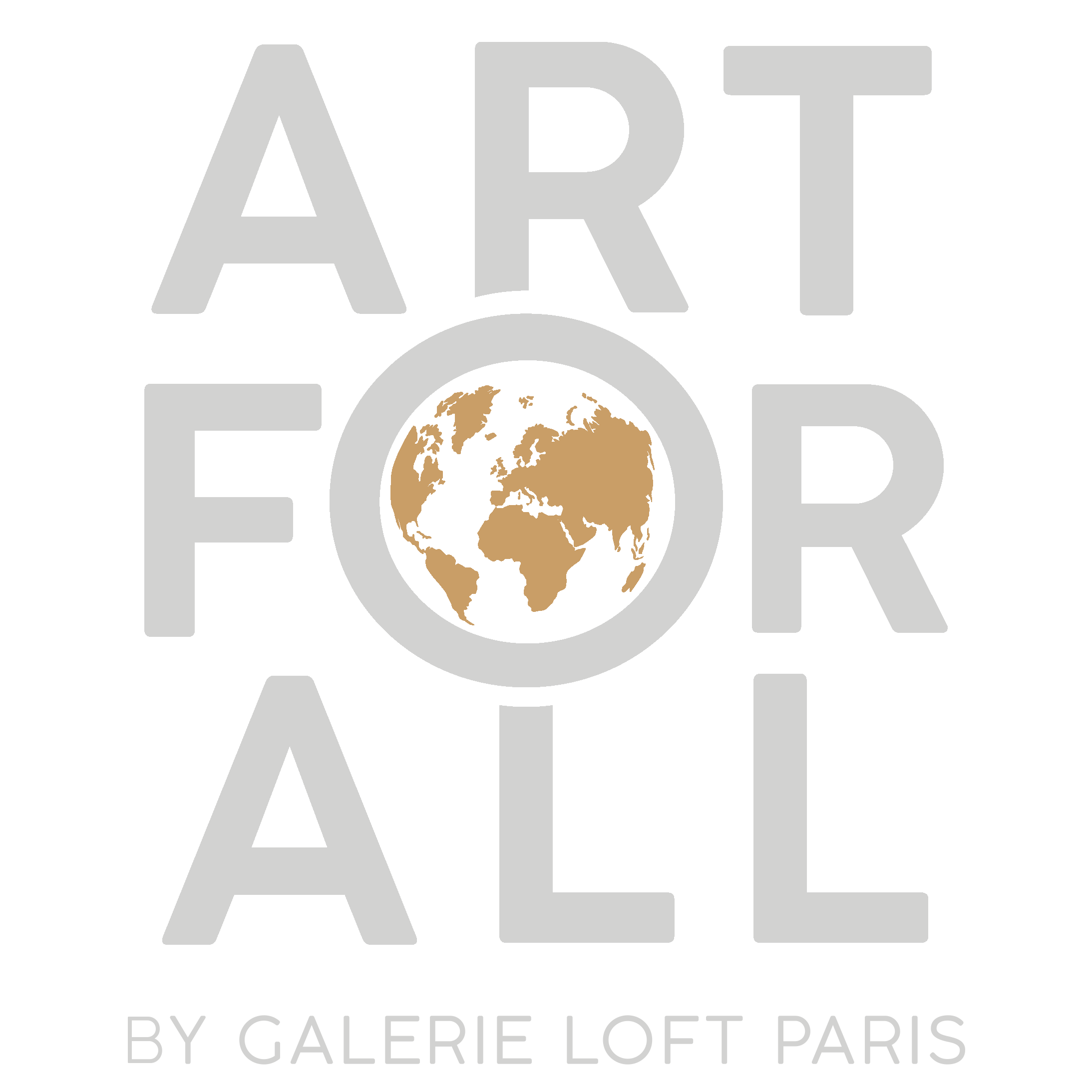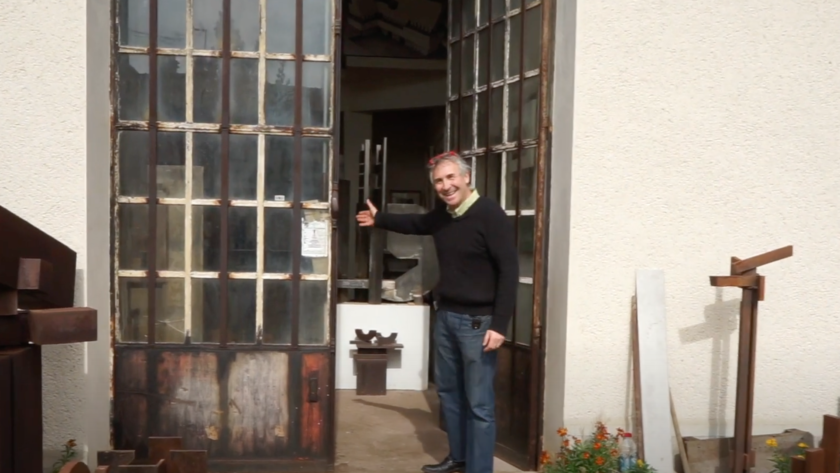
My sculpture is designed according to the dynamic relationships which maintains with the outside world. It is not an object less or more empty, it is a development which captures the air, directs it and makes it circular.
Francesco Marino Di Teana
Born in 1920 in the small village of Teana, in Basilicata (Italy), Francesco MARINO DI TEANA was a shepherd and an apprentice mason in Italy, then foreman, architect and professor of Fine Arts Ernesto de la Carcova in Buenos Aires. (Argentina) before returning to Europe in 1953 and settling in Paris. At the same time painter, sculptor, architect, poet and philosopher, he builds his work on the themes of architectural sculpture and tri-unitary logic considered by journalist Harry Belley as one of the most important discoveries of 20th century sculpture, integrating the “void” as an active element of the composition. Represented for more than twenty years by the legendary Galerie Denise René, it is exhibited alongside prestigious artists of the time such as Vasarely, Jesús-Rafael Soto, Julio Le Parc, Sonia Delaunay, François Morellet, Carlos Cruz-Díez and Richard Mortensen. He then frequented many artists such as Yaacov Agam, Jean Arp, Jean Tinguely, Jean Dubuffet, César or Luis Tomasello and developed a great fascination for architects.
Winner of prestigious artistic prizes, he is recognized by the greatest creators and art critics of his time, notably after having won first prize in February 1962 in the “sculpture for a factory” competition organized by the Saint-Gobain company and awarded unanimously by a jury composed of Alberto Giacometti, Zadkine, Poliakoff, André Chastel, Michel Butor, Michel Seuphor, the architect Grégoire and the professor of aesthetics Étienne Souriau.
Following this great event, his notoriety exploded, his work was praised in the press and he saw the doors of corporate sponsorship open.
The following year, it became the precursor of the “Monumenta du Grand Palais” with its Monumental Fountains, H.9 m x W.16 m in collaboration with Saint-Gobain.

With this desire to bring art and industry together, he also discovered in the factories of his friend André Ramel, an industrialist recognized for his know-how in original pieces (luxury cars, concorde, artworks, etc.) new practices around steel and stainless steel which allow him to create several pieces of furniture, always characterized by his research at architectural composition. At that time he left the center of Paris to settle with his family in the Parisian suburbs, in Périgny-sur-Yerres, in an old farmhouse that he redeveloped into an impressive workshop with a forge where he would continue his work with extreme self-discipline until the end of his life.

This workshop, preserved by the Francesco Marino di Teana Committee, still houses today a varied corpus of drawings, paintings, reliefs, architectural sculptures but also many models which were the beginning concepts for the public monumental sculptures (within framework of the 1% artistic). More than 50 sculptures, mostly in the 1960s and 1970s, are installed in France and Europe including the “Liberté” (Fontenay-sous-Bois, Val de Marne) considered the largest steel sculpture in Europe with its 21 meters height for more than 100 tons of Corten steel.

After presenting a series of major exhibitions in France in the mid-1970s, the artist was named and honored “Chevalier de l’Ordre des Arts et des Lettres” during a traveling exhibition which ended with a major retrospective at the Museum of Modern Art in Paris in 1976. Its reputation took him into an international dimension. Several monumental sculptures are installed in the city of his origin. Argentina asked him in 1982 to represent the country at the 40th Venice Biennale.
In 1987 the Argentinian author Tomas Alva Negri devoted an important monograph to him and the Saar Museum in Saarbrücken in Germany honored him with a new major retrospective. He was also invited to represent France at the International Symposium of Arts and Sciences in Seoul (Korea) in 1998, exhibited in Prague in 1999 and in Poznań (Poland) in 2009. Died in 2012, Francesco Marino Di Teana leaves behind him a considerable artistic heritage. The Francesco Marino Di Teana Committee, represented by his son Nicolas who worked alongside him for more than ten years, remains today more active than ever in the defense, promotion and safeguard of his work. In particular, it has enabled to publish the Catalog Raisonné of the artist edited by LOFT Gallery in December 2018.
Dawn (aube) by Marino Di Teana
Discover the iconic sculpture by Marino Di Teana in the video
This artist offers you
-
500,00€
AUBE Limited copper versionFrancesco Marino Di Teana
Add to WishlistBuy nowAdd to Wishlist -
400,00€
Tribute Lao Tseu H.16cm Chrome-platedFrancesco Marino Di Teana
Add to WishlistBuy nowAdd to Wishlist -
400,00€
Tribute Lao Tseu H.16CM BrushedFrancesco Marino Di Teana
Add to WishlistBuy nowAdd to Wishlist













